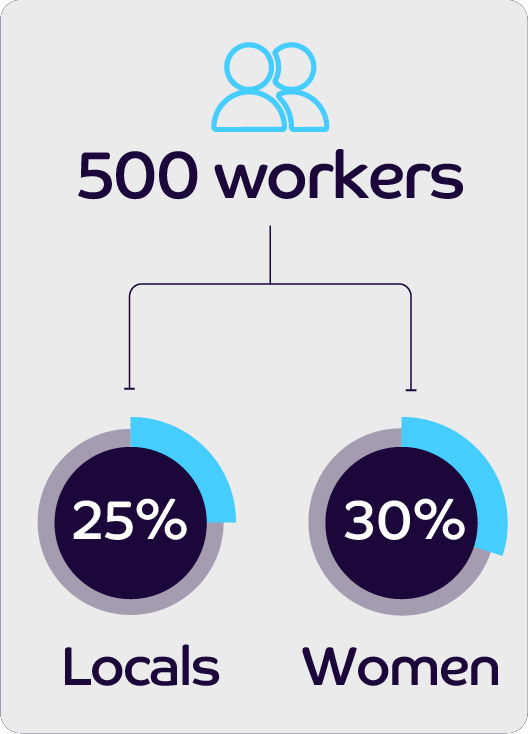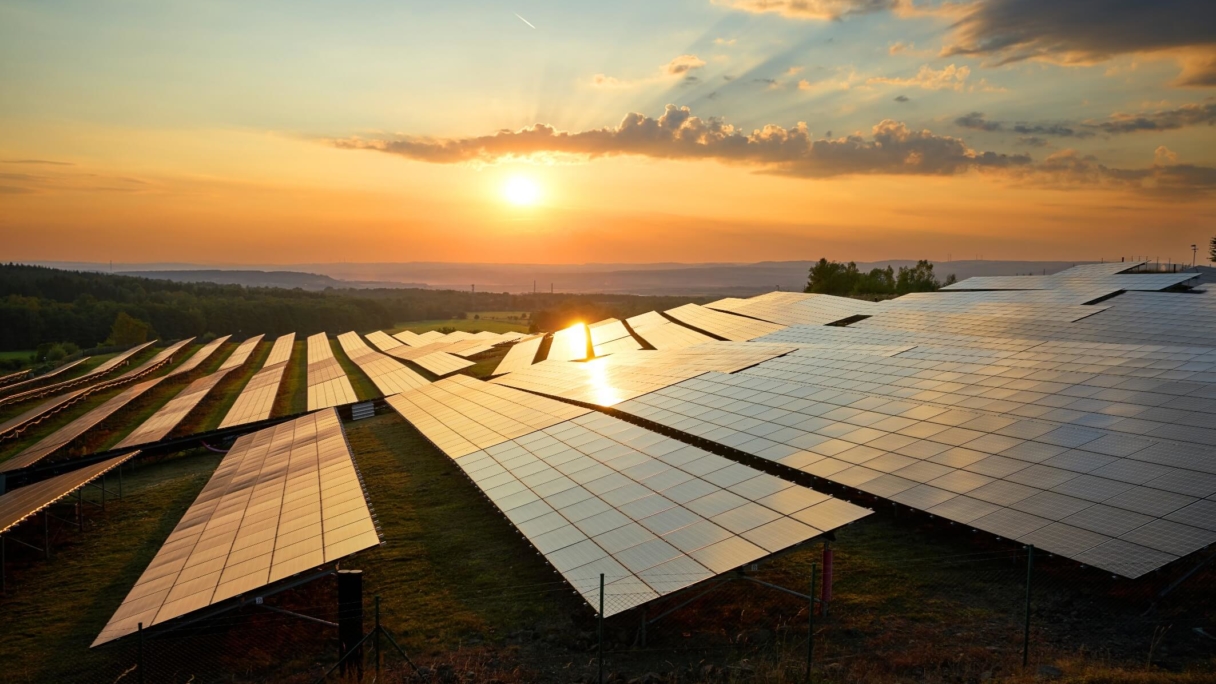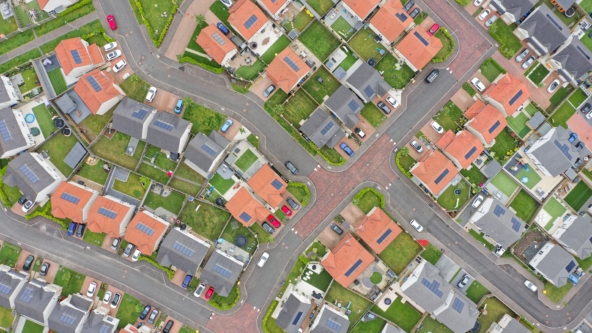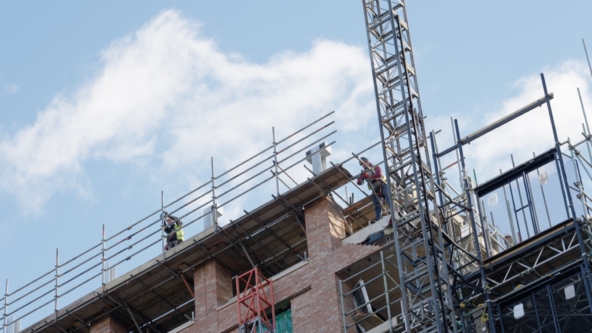Institutional investors can create significant impact through investing in renewable energy infrastructure, with Octopus.
Transforming the energy sector is our passion. At Octopus Renewables, we’re leading the transition to green energy by tackling some of the big problems, such as climate change, and by working towards better solutions for the environment.
A key way to achieve this is by investing directly in renewable energy developments. Not only does this give us access to high-quality investment opportunities, but it also allows us to know exactly what we are buying and to ensure that these developments meet the quality threshold we demand of our assets.
Last year, we completed a project in Australia that exemplifies these goals. It clearly illustrates that investing in the renewables agenda can truly elicit change.

Darlington Point: Australia’s largest solar farm
In August 2020, we completed the generator-registration process for our first solar farm in Australia, at Darlington Point in New South Wales (NSW). Covering 2,000 acres of land, with a 19-kilometre perimeter, the site houses nearly 1 million solar panels and has the potential to generate 685,000 MWh of renewable energy each year. That’s the equivalent of more than 420,000 barrels of oil. The farm will provide power to 115,000 homes (representing 5% of homes in NSW). Moreover, it is expected to offset the equivalent of 154,000 tonnes of CO2 emissions over its 35-year lifespan.
The successful completion of this venture represents a significant milestone for the Australian electricity market: filling a looming gap in local power generation and presenting an investment template for what is possible for renewables in Australia and beyond.

Decarbonising Australia’s energy supply
Australia is taking its time to embrace renewable energy. It is one of the world’s largest exporters of coal and has traditionally relied on fossil fuels to power most of its homes and businesses. The 2020 Australian Energy Statistics report showed that electricity generation from coal accounted for 58% of total generation in 2018–19, while the provision of natural gas represented 26% of the energy mix.[1]
However, the report also noted that electricity generation from renewables was up 17% from the previous year, highlighting a recognition that Australia needs to use more renewable energy to power the country.
The drivers behind this change are twofold. Last year’s wildfires illustrated just one aspect of the damaging effects of climate change and global warming, underscoring the need to shift to more sustainable energy sources. However, ageing infrastructure and a growing population are also super-charging demand. In fact, over 55% of Australia’s coal-fired power stations are now over 30 years old and will need to be retired in the near future. This means that an estimated AUS$170 billion of new energy investment will be required in the coming years to meet demand.
While Prime Minister Scott Morrison’s government continues to offer incentives to fossil-fuel enterprises, we saw an opportunity to use our vast experience of renewable-energy generation in Europe to help fill this power-generation gap with cleaner energy sources.
Finding the right connections
Such projects need to stack up economically as well as environmentally, and the location of Darlington Point ticked a number of boxes. Besides the excellent solar resources in the region, the site is adjacent to a major existing transmission substation and has development approval to accommodate batteries in the future.
To bring this project to life, our Australian business, Octopus Investments Australia, partnered with solar developer Edify Energy and received permission from the NSW Department of Planning and Environment to begin development in December 2018. In the same month, we also secured a purchase-power agreement with NSW energy supplier Delta Energy that will see it use 55% of the energy the solar farm produces over the next ten years.
In addition, a joint venture between Signal Energy and Canadian Solar was established for onsite engineering, procurement and construction, with Canadian Solar also overseeing operations and maintenance.
Building community benefits
A project like Darlington Point is about much more than just providing clean energy. The social impact has been powerful too.
The solar farm is located ten kilometres away from the small, rural town of Darlington Point, where the population is just over 1,000 people. This gave us an opportunity to make a real difference by making sure the development was widely embraced by the local community. We were particularly mindful to preserve special aboriginal sites and maintain site biodiversity.

It was important to us to establish strong relationships with these key stakeholders. Our business is not just about profitability, but also about having a positive impact on wider community. Our site is going to be a part of local lives for at least 35 years, and we worked hard to ensure that it would provide long-term benefits.
Our construction work created 500 jobs and, by holding a careers fair in the town, we were able to recruit 25% of these workers from the local community. Moreover, 30% of our construction workers were women, which was high for such rural jobs.
In addition, the local community provided accommodation to the construction labour. Local retail businesses and restaurants delivered supplies and food to the site, and traineeships are planned for the future. Fundraisers were also held on site to support local charities. Overall, unemployment in the area dropped to 2.4%, according to Kellie Dissegna, Economic & Tourism Development Manager for the local council.
A project to introduce a smart watering system is underway, which, once introduced, could potentially cut the drought-impacted community’s water usage by 33%. During COVID, our team on the ground arranged for 40 care packages to be delivered to the most vulnerable residents in the surrounding towns. The care packages sourced items from 10 of the local businesses. We also produced an education video on solar energy for the local primary schools which tied into the school curriculum of ‘Sustainable Future’. There has been strong support from the local community from the very beginning, with not a single objection to the planning approval, which is very rare of a renewable project in Australia of this scale.
Investing in a renewable future
The overall cost of the Darlington Point project was AUS$450 million (£250 million). Significantly, this was financed without any government subsidy at all. For us, this is significant. Ten years ago, our first UK site was built with about 80% of subsidised funds, so to achieve a project of this scale independently shows how the renewables sector has evolved over the last decade.
We couldn’t have achieved this without the support of the investment community. Throughout our history, we have sought to help institutional investors unlock the potential of renewable energy. The success of this project reassures us that investors are becoming more comfortable with different forms of revenue streams, which is encouraging for future developments. And there will be more.
The transformational change needed to decarbonise the planet remains vast, and different regions are at different stages of this journey. Darlington Point shows just how impactful such developments can be – every megawatt of renewable energy produced has a significant impact on the displacement of fossil fuels.
We believe institutional capital has a big role to play in helping to finance these initiatives. And as these assets deliver a long-term, predictable income and align with investors’ desire for more responsible investments, we want to encourage more institutional investors to join us on this journey.

[1] 2020 Australian Energy Statistics.



